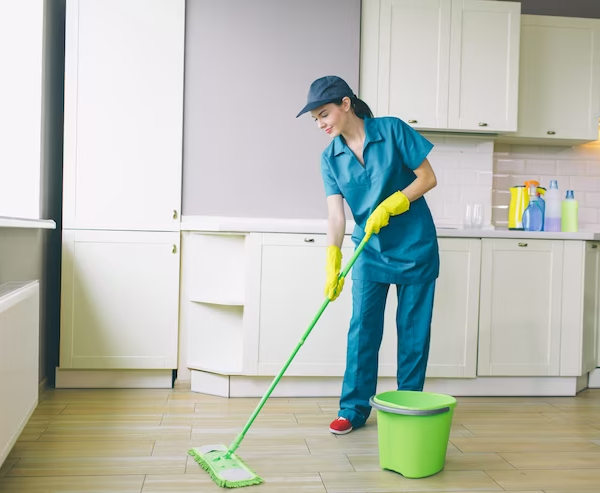
Flooding in the basement is a homeowner’s nightmare. It can cause significant damage and pose health risks if not handled properly. Whether the flood is due to heavy rain, a burst pipe, or an overflowing appliance, it’s crucial to act quickly to minimize damage and restore a flooded basement effectively. This article will provide a step-by-step guide on how to restore a flooded basement, ensuring your space is safe and functional again.
Immediate Steps to Take
Ensure Safety First
Before you start any restoration efforts, safety should be your top priority. Here’s what you need to do:
- Turn Off Electricity and Gas: Water and electricity are a dangerous combination. Shut off the power supply to the basement to prevent electrical shocks or fires. Also, turn off the gas supply to avoid potential gas leaks.
- Wear Protective Gear: Put on waterproof boots, gloves, and masks to protect yourself from contaminants in the water, which may include sewage, chemicals, and debris.
Remove Standing Water
Removing standing water is crucial to prevent further damage and reduce the risk of mold growth. Here’s how to do it:
- Use a Sump Pump: A sump pump can efficiently remove large amounts of water. If you don’t own one, you can rent it from a hardware store.
- Wet/Dry Vacuum: For smaller amounts of water, a wet/dry vacuum can be useful. Ensure it’s rated for water removal.
- Professional Help: If the flooding is extensive, consider hiring professionals who have the equipment and expertise to handle severe water damage.
Assess the Damage
Inspect Structural Integrity
Once the water is removed, the next step is to assess the extent of the damage:
- Check for Cracks and Leaks: Inspect the walls and foundation for any cracks or leaks that could have caused or been exacerbated by the flooding.
- Evaluate Foundation Stability: Look for signs of structural damage, such as sagging walls or floors, which may indicate more severe issues.
Evaluate Personal Property Damage
Assess the condition of your personal belongings:
- Furniture and Appliances: Determine what can be salvaged and what needs to be discarded. Items made of porous materials like fabric or wood are more likely to be damaged beyond repair.
- Important Documents and Keepsakes: Dry these items out as soon as possible. Consider professional restoration services for valuable or sentimental items.
Drying and Dehumidification
Ventilation
Proper ventilation is key to drying out your basement:
- Open Windows and Doors: Increase airflow by opening windows and doors. If the weather permits, this can help speed up the drying process.
Use Dehumidifiers and Fans
Reducing moisture levels is essential to prevent mold growth:
- Dehumidifiers: Place dehumidifiers in the basement to extract moisture from the air. This will help dry out the space faster.
- Fans: Use industrial fans to circulate air and speed up the drying process. Aim them at damp areas for maximum effectiveness.
Remove Wet Materials
Wet materials can harbor mold and should be removed promptly:
- Dispose of Carpets and Drywall: Water-soaked carpets, drywall, and insulation should be removed and replaced. These materials can develop mold quickly and are difficult to dry completely.
Cleaning and Sanitizing
Disinfect Surfaces
Cleaning is not just about removing dirt but also about disinfecting:
- Use Cleaning Agents: Disinfect all surfaces with appropriate cleaning agents to kill bacteria and prevent mold growth. A mixture of bleach and water can be effective.
Prevent Mold Growth
Mold can start growing within 24-48 hours after flooding:
- Mold Inhibitors: Use mold inhibitors on all cleaned surfaces to prevent future mold growth.
- Thorough Cleaning: Ensure every nook and cranny is cleaned, as mold can grow in hidden spots.
Repair and Restoration
Structural Repairs
Address any damage to the structure of your home:
- Fix Cracks and Leaks: Repair any cracks in the foundation and seal any leaks to prevent future water intrusion.
- Reinforce Foundation: If necessary, reinforce the foundation to ensure it remains stable.
Replace Damaged Materials
Replacing damaged materials is often necessary:
- Drywall and Insulation: Install new drywall and insulation to replace what was removed. Ensure these materials are mold-resistant if possible.
- Flooring: Replace damaged flooring with new materials. Consider waterproof options to minimize future risks.
Restore Personal Property
Clean and restore items that can be salvaged:
- Furniture: Clean and disinfect furniture that was not severely damaged. Consider professional cleaning for upholstered items.
- Appliances: Ensure appliances are completely dry before use. Have them inspected by a professional if necessary.
Prevent Future Flooding
Waterproofing Solutions
Implementing waterproofing solutions can help prevent future flooding:
- Install Sump Pumps and French Drains: Sump pumps and French drains can help manage water around your home and keep your basement dry.
- Waterproof Coatings: Apply waterproof coatings to basement walls and floors to create a barrier against water intrusion.
Regular Maintenance
Routine maintenance can prevent many flooding issues:
- Inspect Gutters and Downspouts: Ensure they are clear of debris and direct water away from your foundation.
- Check for Leaks: Regularly inspect your home for leaks and address them promptly.
Landscaping
Proper landscaping can help manage water flow:
- Grading: Ensure the ground slopes away from your home to direct water away from the foundation.
- Plants and Shrubs: Planting water-absorbent shrubs and plants around your home can help manage excess water.
Conclusion | Tips to Restore Flooded Basement Water Damage
Restoring a flooded basement is a challenging but manageable task. By following these steps, you can effectively restore a flooded basement, prevent mold growth, and protect your home from future flooding. Remember, prompt action is crucial to minimize damage and ensure a successful restoration. If the task seems overwhelming, consider reaching out to professional water removal companies for assistance.










